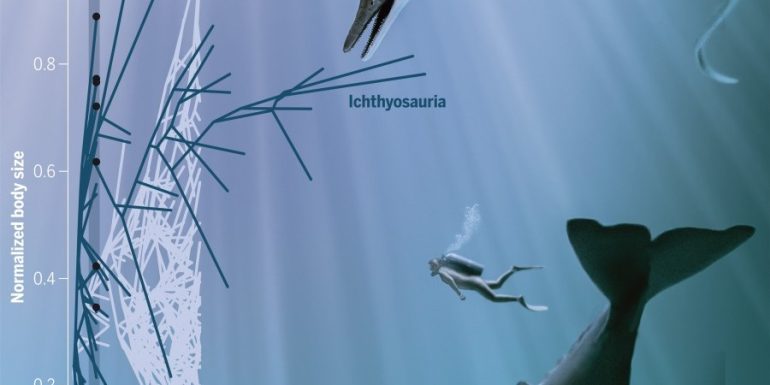Paleontologists have discovered in a mountainous area of present-day northwestern Nevada the impressive fossilized skull of a giant sea monster that lived in the early dinosaur age, some 246 million years ago. Its skull was two meters long (it was larger than the Tyrannosaurus), its body was more than 17 meters (about the size of today's bellows), while it weighed 45 tons. It is an unexpectedly large species of fish lizard, the first known giant animal on Earth.
Fish lizards were marine reptiles that lived 249 to 90 million years ago, looked like fish and terrorized the seas at a time when dinosaurs ruled the land. They evolved rapidly, reaching such a large size in just 2,5 to three million years. By comparison, whales - the largest animals today that first appeared about 56 million years ago - took almost 50 million years to reach the size of fish lizards. The latter evolve from land reptiles that have not yet been identified.
Researchers from the United States and Germany, led by Martin Sander, a professor of paleontology at the University of Bonn, who published the paper in the journal Science, named the new species Cymbospondylus youngorum. The fossils (of the giant skull and part of the body) were excavated in 2015, but only now - after many years of study - have the scientists announced their findings.
As Sander put it, "As far as we know, it was the first giant creature to live on Earth. "We assume that fish lizards were able to evolve so quickly because they were the first largest creatures in the world's oceans and thus exposed to less competition." "Imagine an animal like a sea dragon," said Lars Smith, an associate professor of biology at Scripps College in California.
The fossil will be housed permanently in the County Museum of Natural History in Los Angeles, and a replica of the skull will soon be on display at the Goldfuss Museum of the University of Bonn in Germany.
See link for scientific publication HERE
Source: RES-EAP
